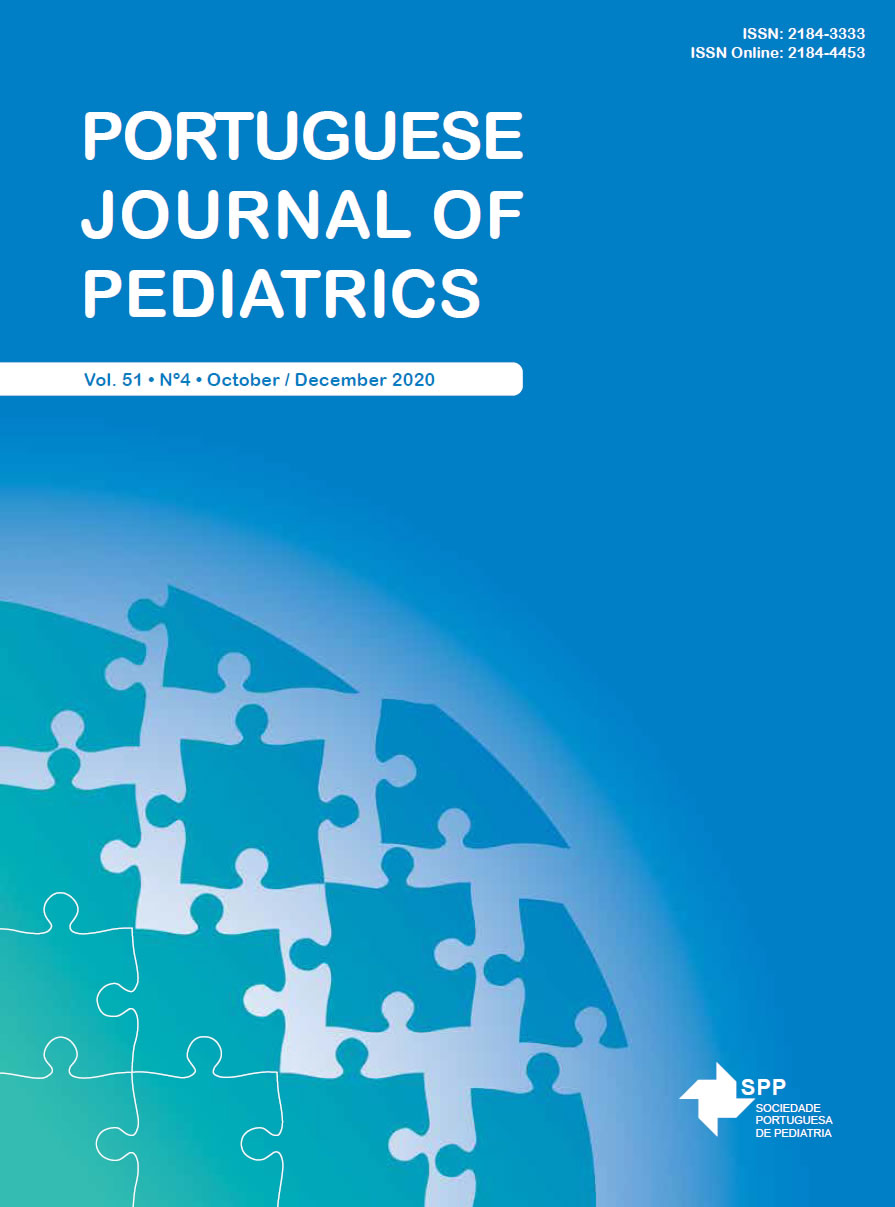Epidural Analgesia for Better Pain Control After Surgery in Children
Date of submission: 03-02-2020 | Date of acceptance: 19-06-2020 | Published: 02-10-2020
DOI:
https://doi.org/10.25754/pjp.2020.19401Abstract
Introduction:
Postoperative pain in children is sometimes inadequately prevented and treated. Analgesics are mainly administered through intravenous route yet regional analgesia can also be used. The purpose of this study is to better understand the effects of combining epidural with standard analgesia in achieving postoperative pain relief.
Methods:
Retrospective chart review of postoperative pediatric patients, following genito-urinary surgery, admitted to an acute care pediatric unit during a 5 year period. Demographic and clinical variables were collected, including pain evaluation and analgesia in the first three days. Two groups were considered, Group A: standard analgesia; Group B: standard and epidural analgesia.
Results:
Thirty-nine postoperative admissions were analyzed (34 patients): Group A – 15; Group B – 24. Median age was 2.29 [0.46-13.17] years old with 60% male (Group A) and 6.19 [0.38-17] years old with 75% male (Group B). Median sum of pain intensity score was lower in Group B (1 vs 0.43; p 0.049) and less ketorolac and morphine doses were administered in Group B (2 vs 1, p 0.044; 2 vs 0, p 0.014). No important side effects were noted in either group. Epidural catheter was in place for a mean time of 50 hours. Length of stay was similar in both groups.
Discussion:
Better pain relief was achieved through epidural analgesia, carrying no associated complications, and allowing lower use of rescue medication. Results are similar to published literature, reinforcing that this type of analgesia should be explored as an alternative in children.
Downloads
Downloads
Published
Issue
Section
License

This work is licensed under a Creative Commons Attribution-NonCommercial-NoDerivatives 4.0 International License.









